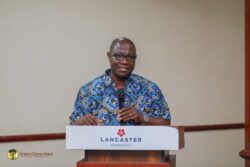In last week’s article, Lionel unpacked the initial phases of the ambitious plan for building a billion-dollar business: including the array of market complexities that awaited him in his new role; unexpected failure; and the important lessons he quickly learnt from the early setback.
In this week’s article – the last in a three-part series – Lionel walks us through the ‘rise after the fall’, and details how the ‘shifts in mindset’ and strategy at each stage of the upward growth journey were critical in dramatically lifting the venture from ‘zero to hero’.
One of the best lessons I learned during my career was that in striving for success, you must be prepared to fail.
Furthermore, an overall mindset-shift needs to take place, whereby you internalise that there are no failures. You win, or you learn and move forward. It’s one or the other – and I guess it’s quite similar to the ‘every cloud has a silver-lining’ notion.
We were then entering what was the second phase (12-36 months) and were in a worse-off position from where we’d started. The team was discouraged and licking their wounds from the energy-drink mauling, but all was not lost – we were coming back swinging.
For our comeback, we were going ahead with the juice venture; and were determined to use lessons from the energy-drink debacle to our advantage and ‘fail forward’.
Juice is high value and high volume, but with the current infrastructure margins were low – and so significant investment was required. But, for a while, that would have to wait. We needed momentum if we were going to get others to jump on the bandwagon.
Starting Small and Scaling Fast
For Phase 1, we came up with a new direction – starting small and scaling fast. We were importing the ready-to-drink product from our European bottling plants by just one container at a time – a far cry from the usual logistical operations of such an enormous company. Much like the successful start-up competitor we had seen beat us in the energy-drink race, we would start small and local, focus on the consumer, and scale from there.
Before we knew it, the insidious strategy was working and we had gained a lot of traction that allowed us to scale incrementally and keep the wave going.
The next step was to streamline the route to market, and the key part of that was producing products locally – but that wasn’t going to be cheap.
We knew we would have to outsource and frame it as an investment opportunity. We approached a giant philanthropic foundation that had expressed a desire to double the income of 56,000 farmers in Uganda and Tanzania – and so we leveraged that goal by proposing plans to build a fruit processing plant that would help the farmers and also put lots of locals into gainful employment. It was a win-win arrangement, and the foundation was soon onboard. It donated US$8million to set it up, and so it wasn’t long until we were up and running. With that key link in the value chain established, we then wanted to diversify the product even more locally, and copy and adapt the template in other regions.
Initially, we were using tried and tested juice recipes from other parts of the world – but the African palette is much sweeter, and so we tweaked our recipes to increase their local appeal; taking a lesson from the energy-drink brand, that of understanding the consumer on a local level to maximise appeal. Along with the attractive notion that we were promoting – that these drinks are made with local produce and by local people – this taste-tweak was another big step forward in gaining traction. And soon after, the brand really started to take off.
Generating System Belief
We set about leveraging the initial success and created ripples that made the company and value chain sit up and take notice. It generated the system belief we needed to increase the momentum even further, and so we scaled further by setting up more manufacturing plants using a hub-and-spoke strategy. For example, Kenya would supply East Africa, Zimbabwe the South; and more plants would service the western and central regions.
We now had a fully-African business model that was fit for purpose from fruit to mouth, and was showing great potential. We gained so much traction that belief throughout the organisation and value chain was now very strong indeed – so much so that new bottling lines were being invested into, to the tune of US$600million across the continent.
The company itself put very little into this, but the investors were queueing-up to set up new infrastructure that would allow them to ride the tsunami of this now hugely successful, locally powered venture.
With the huge onboarding of investors and with full backing of the company, it was time to shift the mindset again to maximise the returns. Just like any powerful machine, it can always be fine-tuned to improve both economy and output.
We had to diligently analyse the situation and employ what I call ‘systems thinking’. Essentially, we put the whole process under the microscope and made refinements across the whole system to eke out extra percentages and manifest the full potential of success.
Purposefully Shifting the Mindset
It would have been easy to carry on riding the wave, but we purposefully chose to shift the mindset toward a critical and streamlining approach. We bolted on the turbos and fine-tuned our supercar into a hyper-car that nothing else could keep up with.
With the huge success that followed, we continued to increase our market share organically – but we also bought a lot of competitor brands along the way, which of course also tightened our grip on the market overall. It was a snowball of success, and the way we played each stage of the game was what kept it rolling and growing exponentially.
The key takeaway from the whole adventure is that while this was an exceptional case, there’s nothing new under the sun! Whether you apply the same circumstances to the beverage industry or a new or established technology company, the basic principles to overcome and succeed are the same. Acquire your resources resourcefully, adopt a start-up mentality, and leverage situational leadership that requires you to be fluid in reconsidering strategy options while moving away from the cut-and-paste mentality.
A specific mix of business ingredients requires a specific cooking process to achieve the best results, and it takes some trial, error and perseverance to synthesise that ideal recipe.
Quite often, CEOs will adopt a scalable “If it ain’t broke, don’t fix it” approach after their initial success in growing a start-up. The stumbling block thereafter is that they fail to recognise the drastic changes which must be implemented at each stage of growth. The core of the strategy is executing each stage of the process with the right mindset, and adopting transformational leadership.
This means the strategy evolves and often shifts quite drastically as the business transitions through different stages of growth: foundation – structure – finishing touches.
The journey of building a billion-dollar business is a long roller-coaster of ups and downs, but a CEO will lead the way there much faster and smoother if they see that each stage of upward trajectory requires a specific mindset. The approach to growth must evolve at each stage to get them through to the next stage, and keep evolving toward the ultimate goal.
Moreover, CEOs often fail to communicate this evolutionary process to their team, and as a result many companies stagnate during a particular phase despite initial success.
Three Stages of Growth
The three stages of growth in this case can be summarised by three different mindsets and ‘plays’ in the strategies toward achieving billion-dollar success.
Start-up ‘entrepreneurial hat’ mindset
- First is the start-up ‘entrepreneurial hat’ mindset. Start small and cautiously, then scale fast on the initial success. In doing this, be clear about the consumer problem you want to solve, and be fiercely consumer-centric by diligently understanding the “human being behind the customer”.
Create a ‘system belief’ across the organisation, build sustained momentum
- On attaining the initial altitude from the launchpad, it is critical to leverage that to create a ‘system belief’ across the organisation and build sustained momentum – supported by disciplined performance management. Our initial success attracted company backing and huge external investment, which propelled us forward fast with minimal risk to the company, while allowing us to scale the success monumentally.
Embed ‘systems thinking’ in the culture, develop strategic partnerships
- 3. As the businesses exploded, it was essential that we leverage our technology and infrastructure to embed ‘systems thinking’ in the culture while learning from other industries and developing strategic partnerships within the business value chain. Fine-tuning the ‘machines’ output to meet demands of the market efficiently is what maximised our profits. Rather than using the century of industry experience to propel our launch, as we tried to do with the energy-drink, instead it really came into play once the venture was off the ground and we could use all that experience, manpower and capital strength to fine-tune every aspect of the process.
The Great African Opportunity
Right here and right now, the African continent presents great opportunities to establish many more billion-dollar businesses. Despite the continent’s complexities – 55 countries, over 200 languages, 42 currencies and multiple logistical challenges – the success is there for the taking.
More to the point, these are opportunities with great potential to benefit all of us. Rather than the many exploitative, externally-backed ventures the continent has been subjected to for centuries, these opportunities have the potential to grow fruit that will be put back into our communities – from Africa, for Africa!
We can choose to not export the wealth generated by these opportunities, and we can inject it straight back into our home soil.
With a GDP of US$3.4trillion, more than 400 companies with over US$1billion in revenue, 17 cities with populations of over 5 million and a 1.3bn population projected to hit 2.5bn in less than 30 years, there are significant opportunities in multiple industries to take all the way.
Our entrepreneurs and business-people must take advantage of Africa’s existing trading blocs to unlock the value presented by economies of scale.
Trading blocs such as SADC, ECOWAS, COMESA, EAC, and more recently the AfCFTA – which has made Africa the largest free trade area by number of countries – present incredible opportunities to build large businesses on the continent.
The question is, who is willing to rise to the occasion and take on the challenge? And do they have the right mindset for each stage of the journey to successfully climb each rung on the ladder?
Only time will tell, but I feel that history is in the making and the fortunes of Africa are a tide that is starting to turn.
Lionel Marumahoko is an Executive Coach, Leadership Speaker, and Business Advisor who specialises in complex transformation growth and new market entry in Africa.
Lionel writes in his personal capacity, and can be reached at: info@lionelmaru- mahokosnr.com
Or via his LinkedIn page: https://www.linkedin.com/ in/lionel-marumahoko
Or on his blog: https:// www.lionelmarumahokos- nr.com/










